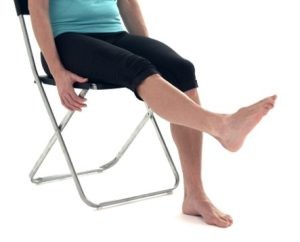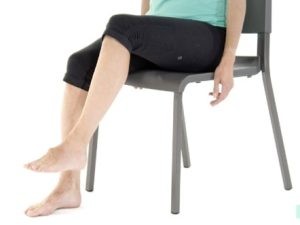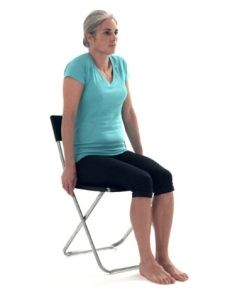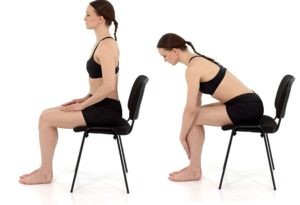Neurodiversity information for parents and young people
You have been referred to the falls prevention home exercise programme by your GP, care home manager or hospital ward physiotherapist.
| My name | |
| Date started | |
| My volunteer's name |
About the falls prevention home exercise programme
Regular strength and balance exercises can improve your physical wellbeing and reduce your risk of falling.
The falls prevention home exercise programme is:
- an 8 week programme which focuses on strength and balance
- designed by the Kingston Hospital physiotherapy team
- administered by Kingston Hospital volunteers. They visit you in your home or care home and help you to complete the exercises.
Aims of the programme
The programme aims to:
- reduce your risk of falls and improve your strength, balance and co-ordination
- improve your confidence and mood
- support your wellbeing and independence
- reduce your risk of being admitted to hospital.
Getting started with the home exercise programme
Once you are enrolled, a member of the Kingston Hospital volunteer team will contact you.
They will allocate a volunteer to visit you in your home or care home and help you complete the exercises.
How to get the best results from the programme
To get the best results from the programme:
- For over 65 year olds, the recommended guideline is for at least 150 minutes (2.5 hours) of moderate activity a week.
- Once a week, try to complete the booklet with your allocated community exercise volunteer. Do this for the full eight weeks of the programme.
- Take part in a weekly phone call with your allocated volunteer. Do this for the first four weeks of the programme.
Staying safe during exercise
These exercises are designed to make it safe for you to move your body and get the most benefit from exercising. Follow the exercises as designed by our physiotherapists and guided by the volunteer who is supporting you.
To stay safe during exercise, do the following:
- Warm up before you exercise (see Warm up exercises section).
- Cool down after you exercise (see Cool down stretches section).
- Exercise by holding on to an object which is sturdy and stable. This can be a heavy chair or table or a kitchen sink.
- Wear comfortable clothes and supportive, non-slip footwear.
- Drink a glass of water before you start the exercises.
- Avoid exercising on an empty stomach.
| If you experience chest pain, dizziness or severe shortness of breath. |
Stop exercising immediately.
|
|
If you experience pain in your joints or muscles |
Stop exercising. Re-read the exercise instructions and check your technique. Try exercising again. Tell your volunteer. |
|
If you have questions about this programme |
 Call the Volunteering Team at Kingston Hospital (see Contacts section). |
Exercise levels
Your physiotherapist has referred you to the service at either the ‘Seated’ or ‘Standing’ level of the programme. See the relevant sections below.
Both levels include increased targets for each exercise if they become too easy for you.
Each time you see your volunteer, you can discuss whether you are finding the exercises too easy or hard.
If you find the exercises too easy, your volunteer may give you an exercise ‘resistance’ band, which you can use to make them a little harder.
Warm up exercises
Use the drop-down menu for instructions on how to do warm up exercises.
Always begin with a warm up of stretching to prepare your body for the main workout.
Ankle circles
- Sit upright in the chair
- Lift one foot out in front of you
- Circle your ankle in one direction and then the other
- Repeat on the other leg
- Keep doing this for 30 seconds.

Leg march
- Sit upright
- Hold the sides of the chair
- Lift your feet one at a time and slowly place them back on the floor
- Do this for alternate legs
- Keep doing this for 30 seconds.

Shoulder circles
- Sit upright in the chair with your arms hanging at your sides
- Lift both shoulders up to your ears, roll them around in a circle
- Repeat slowly 10 times
- Do one shoulder at a time if that feels easier.

Trunk bends
- Sit upright in your chair with your hands on your knees
- Slide your hands down your legs towards your shins. Slide them as far as feels comfortable for you
- Return your hands to their starting position
- Repeat this 5 times
- If you have osteoporosis, be careful to only perform a small amount of movement. Do not push until you feel pain.

Main exercises
There are lower body, upper body and balance exercises in this booklet.
Each time you use this programme:
- choose 3 exercises (one from each section). This means one from lower body, one from upper body and one from balance.
- try to select different exercises each time, so you have done them all by the end of the week.
Physiotherapy top tips
- Breathe naturally. It can be helpful to count your repetitions out loud.
- Maintain good upright posture throughout your exercises.
- It’s best to exercise little and often.
- These exercises are simple enough to add to your daily routine. Try doing seated exercises while you watch TV. Try doing heel raises while you are standing waiting for the kettle to boil.
- We need to use our muscles to strengthen them. To exercise at the correct level of difficulty, you need to just about be able to achieve your target number for each exercise.
- If it feels too easy, it means it is too easy. Try making the exercise harder.
Strength exercises: lower body
Contact information
Kingston Hospital Falls Prevention Volunteering Team
Telephone: